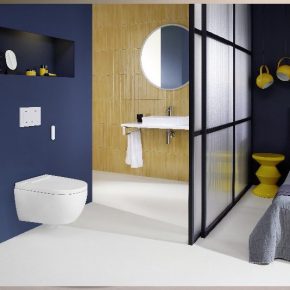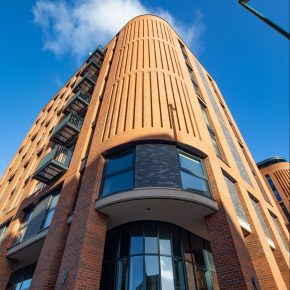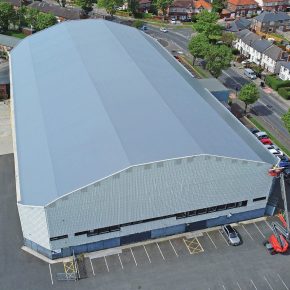Safety checklist: essential safety equipment for construction sites
Working on a construction site is one of the more dangerous lines of work, and hence, certain strict guidelines must be followed to protect construction workers from potential hazards.
Safety Checklist
Construction companies generally have to follow the rules and regulations put forward by Occupational Safety and Health Administration (OSHA) and the National Institute for Occupational Safety and Health (NIOSH).
This includes rules for the job site, rules for the job equipment, and rules for personal protective equipment.
We explore some of the essential safety equipments needed on a construction site.
Strong Scaffolding andamp; Ladders
Even though scaffoldings are a typical feature of the job site, there are strict rules and regulations that need to be maintained for constructing safe scaffoldings.
The constructed scaffolding should be:
- Located at least 10 feet from the power lines
- Checked by a qualified engineer andamp; then reviewed regularly
In addition to this, it is mandatory to have guard rails andamp; toe boards to prevent workers from falling. Also safety nets are required to provide supplementary safety measures.
Ladders are also very important equipments on construction sites, but are the most overlooked because they are very common. It is necessary to have the right ladders on construction sites. Sturdy extension ladders should be used which lean back one foot for every four feet of height.
Aluminium ladders are the most popular ladders because they are made of lightweight material andamp; are very sturdy. But because they conduct electricity, ladders made of fibreglass are preferred in sites near electrical wires.
Protective Apparel andamp; Gear
Working on a construction site is a potentially dangerous job andamp; that is the reason certain guidelines have been set which requires all workers on the job site to use protective clothing.
Workers should wear clothing that provides protection against the weather elements, including waterproof or insulated clothing, so as to not distract them from their work. Also, the clothing should be bright or reflective which is clearly visible in low-visibility conditions to avoid accidents.
In addition to this, it is also necessary for the workers to wear protective gear like the following:
- Safety glasses or face shields are mandatory when working with dangerous chemicals or welding
- Slip resistant shoes with solid soles are also important to protect feet from bone crushing injuries
- Workers must wear special gloves in accordance with their job, like, welding gloves being used for welding
- Hard hats are a must andamp; should be routinely inspected for flaws
- Workers must be provided with earplugs for areas where there is a large amount of equipment noise
- Face masks or protection harnesses should be used for duty specific tasks
Fenced Work Area
It is necessary to secure the construction site with a temporary fence for deterring theft andamp; elevating safety.
In addition to this, construction companies must provide a safe and hygienic area on the job site for workers to take their meals and breaks, along with a clean bathroom on site.
Safety Switches andamp; Electrical Points
Safety Switches are a mandatory under law to protect construction sites from electrical hazards.
So here is how a safety switch works:
In a propertys normal power circuit, current that flows through any appliance is returned within a neutral wire. So, it the circuit becomes damaged, power will leak through the wire, electrocuting anyone who is in contact with the live appliance.
A safety switch monitors electrical flow through the circuit andamp; automatically stops the power supply to the device if there are any irregularities in current. In the event of a power shortage, nearly every safety switch is designed to immediately cut down the power.
When it comes to power points, there are simple tips for the safe maintenance of power points that should be followed:
- Dont overload power points by sticking more than one plug into a single socket – arrange an additional power point instead
- To prevent accidental contact, insert safety plugs in unused power point sockets
- Each power point has a maximum voltage allowance
Do not plug high wattage appliances (such as heaters) into power boards – they may overheat the circuit wiring through overload and cause a fire. Ask guidance from a professional before doing so.
- Keep the power points free of dust and dirt
- Do not wipe power points or switches with a wet cloth to avoid accidents
It is essential to keep all these basic points in mind to create a safe working environment for workers on a job site.
Also specialised training programs that help manage the safety equipment will also help making construction sites a risk-free environment.
.
About the Author: Jeson Pitt loves to marry his marketing and blogging skills. Working for the bulk buyers of Electrical Materials, Jeson channel shis thoughts and experience into words, which has helped him establish his reputation as an industry blogger.
Latest news

23rd April 2024
Geberit brings Parallel World to Clerkenwell Design Week
Visitors to this year’s Clerkenwell Design Week (21 – 23 May) can step into a parallel world and discover the benefits of cleaning with water, thanks to Geberit.
Posted in Articles, Bathrooms & Toilets, Bathrooms, Bedrooms & Washrooms, Building Industry Events, Building Industry News, Building Products & Structures, Building Services, Exhibitions and Conferences, Innovations & New Products, Interior Design & Construction, Interiors, Plumbing, Restoration & Refurbishment, Retrofit & Renovation
23rd April 2024
Mitsubishi Electric Ecodan Heat Pumps and Water Cylinders to be stocked by The Boiler Shop
Mitsubishi Electric’s full range of Ecodan heat pumps and hot water cylinders are to be stocked by one of the north-west’s best established independent merchants, The Boiler Shop.
Posted in Articles, Building Industry News, Building Products & Structures, Building Services, Facility Management & Building Services, Heating Systems, Controls and Management, Heating, Ventilation and Air Conditioning - HVAC, Plumbing, Posts, Retrofit & Renovation, Sustainability & Energy Efficiency
23rd April 2024
Trio of Senior products used in new Nottingham residential scheme
Solutions from Senior Architectural Systems have helped complete The Barnum – a new residential development on Nottingham’s Queen’s Road.
Posted in Aluminium Products, Articles, Building Industry News, Building Products & Structures, Building Systems, Case Studies, Curtain Walling, Doors, Glass, Glazing, Posts, Restoration & Refurbishment, Retrofit & Renovation, Walls, Windows
22nd April 2024
New EJOT role will develop strategic support for UK flat roofing sector
EJOT UK has taken a major step in the expansion of its support for the flat roofing market by appointing one of its most experienced building envelope fastening specialists as its first sector-dedicated business development manager.
Posted in Articles, Building Industry News, Building Products & Structures, Building Systems, Innovations & New Products, Posts, Recruitment, Restoration & Refurbishment, Retrofit & Renovation, Roofs
 Sign up:
Sign up: